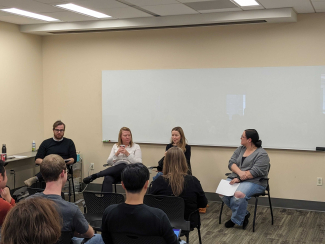Heather Lewandowski
Cold Molecular Collisions
Our lab studies elastic and inelastic collisions between atoms and molecules in the cold temperature regime to understand how the collision energy and quantum states impact the interactions.
Cold Ions/Cold Neutrals
We are in the process of combining apparatuses to study cold ion-neutral reactions.
Cold Ions/Warm Neutrals
Reactions of cold ions with warm neutrals
Mid-IR Molecular Spectroscopy
Measuring the vibrational spectra of cold, isolated molecules using a mid-infrared (mid-IR) spectroscopy setup





 The Physics Frontiers Centers (PFC) program supports university-based centers and institutes where the collective efforts of a larger group of individuals can enable transformational advances in the most promising research areas. The program is designed to foster major breakthroughs at the intellectual frontiers of physics by providing needed resources such as combinations of talents, skills, disciplines, and/or specialized infrastructure, not usually available to individual investigators or small groups, in an environment in which the collective efforts of the larger group can be shown to be seminal to promoting significant progress in the science and the education of students. PFCs also include creative, substantive activities aimed at enhancing education, broadening participation of traditionally underrepresented groups, and outreach to the scientific community and general public.
The Physics Frontiers Centers (PFC) program supports university-based centers and institutes where the collective efforts of a larger group of individuals can enable transformational advances in the most promising research areas. The program is designed to foster major breakthroughs at the intellectual frontiers of physics by providing needed resources such as combinations of talents, skills, disciplines, and/or specialized infrastructure, not usually available to individual investigators or small groups, in an environment in which the collective efforts of the larger group can be shown to be seminal to promoting significant progress in the science and the education of students. PFCs also include creative, substantive activities aimed at enhancing education, broadening participation of traditionally underrepresented groups, and outreach to the scientific community and general public.